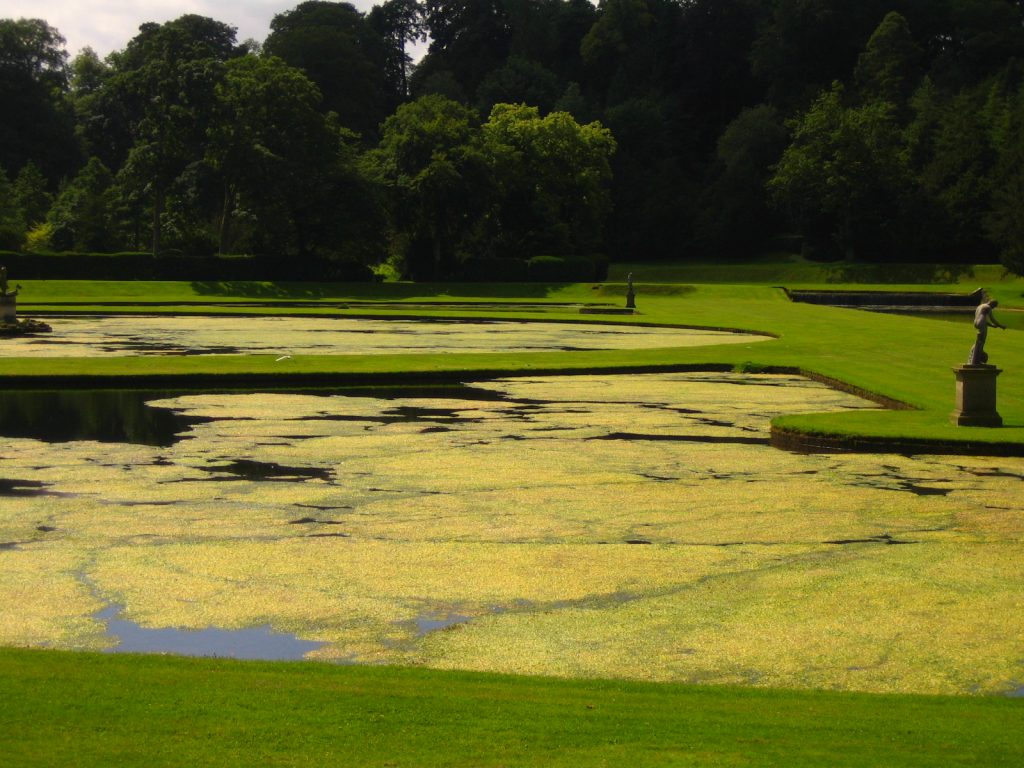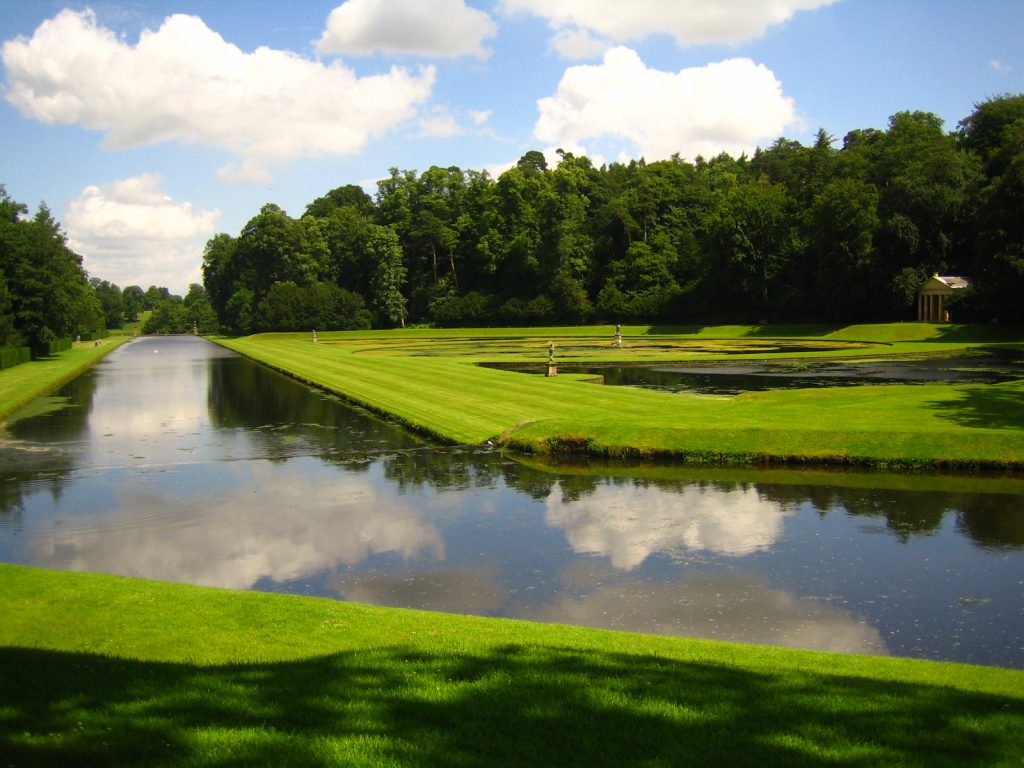When planning a visit to gardens managed by the National Trust, one checks opening times, days/months, and in my case whether dogs are allowed. Lately, though, I have realised there are more things to confirm before a sometimes vast journey is met by disappointment.
A large part of the experience of a garden/landscape is visual, so are we missing out if we cannot take good photographic images or view ‘scenes’ we expected to due to the mismanagement of landscapes?
My displeasure with The NT was prompted by recent visits to two iconic landscapes, and their less than satisfactory responses after I contacted them with my concerns. It would seem the NT has lost its focus and is swamped by policy documents etc and cant concentrate on little maintenance operations. I think this might be because it has become a huge organisation and is too preoccupied with creating strategies for the future and not concentrating on keeping present ‘customers’ happy. It is managing visitors’ experiences now and encouraging repeat visits which will keep these landscapes alive, without visitors there is little point in future management strategies. Customer satisfaction must be the priority and customer satisfaction is, admittedly, a complicated issue but it must rest on the unique experiential qualities of each individual landscape.
The two landscapes I will comment on are Studley Royal and Claremont. At both of these I encountered the same problem of obscured viewpoints. Both of these landscapes contain topographical high points that were utilised as positions from which to overlook the landscape below/beyond. Currently many of these viewpoints are obscured by undergrowth, and in some cases large trees. Most disappointingly is at Claremont where there is a viewpoint indicated on the map shown on the leaflet (more on this leaflet later!) and when one climbs up to where there should be the best view over these iconic grass terraces (the view shown in all images of this landscape) we see only large shrubs and trees in our way. NT do plan to clear it in the future, but apparently it is not a priority because ’not many people use this path’.
As for the leaflet; I was not impressed by the leaflet given to me upon entrance because of the amateur looking drawings of insects and creatures on it. Upon further investigation I became quite disheartened by its contents. The bias towards environmental concerns in this landscape was beyond logic. I thought I had come to a landscape famous for having a number of England’s most famous historical Landscape Architects/Garden Designers work on it, not to a landscape legendary for being where dragonflies flourish. I have nothing against environmental issues and in fact believe quite obviously that the designed landscape and the natural landscape should exist in unison. But let’s get our priorities right here, what is most important about this landscape, what is it special characteristic? If these dragonflies can only be found in this landscape, then fair enough they do deserve a mention, but this leaflet contained one small section on the designers (each of whom have had volumes and volumes of words published about them) and the rest of the leaflet was about bugs and insects etc.
At Studley Royal (which incidentally is a World Heritage Site) I looked forward to seeing the famous Moon Ponds. The photo below shows what I found. When I asked what the NT are doing about green algae I got a very informative response explaining the difficulties in maintaining these pools as they were not designed that well. I sympathised with this and was interested to read further that there is a future £1m redevelopment proposed that ought to alleviate ‘some’ of the green algae problem. I really cannot help thinking that for much less expense than that, why cant they simply scoop out the algae on a regular basis, starting immediately.

Green clouds or turf?
By contrast, the adjacent river shows the reflections my photos should have captured had the Moon Ponds been clear of algae.

White Clouds
The NT are custodians of our heritage. There is always a huge bias towards architectural heritage opposed to landscape heritage anyway, this can possibly be excused. But can the mismanagement of important landscapes ensure their survival into the future? Of course I understand that on the whole and as an organisation the NT do a magnificent job as protectors and advocates, in the big picture, but are they loosing focus on the micro scale? Are these small issues only noticeable to garden historians and not the regular punter, am I being fussy? Either way, I will not be recommending anyone visit a NT trust landscape to see some specific scene unless the NT can assure that that scene is actually available for viewing.

..looks like copious sacks of barley straw at the water entry point might sort out the algae.
I have long thought the idea of a ‘National’ Trust anachronistic: it would be better to many more much more local Trusts – and the best thing of all would be to have individual Trusts for individual properties when this would be feasible.
Re Studley Royal, I was there in the spring and was disappointed by the peculiar Visitor Centre and the profusion of new benches. The emphasis should be more on conservation and less on attracting crowds of visitors.
Barley straw at the water entry point is not nearly a glamorous enough way of spending their, clearly, hugely over funded budgets! Of course the lack of oxygen in the water is the problem and pea straw does help alleviate this, but I dont know if there is a water entry point and I think this forms part of the NT’s argument for spending £1m in the future. The hydrology in this garden was designed by an ‘amateur’ and the ponds are too shallow etc etc.
I dont think the reasons (as valid as they be) are relevant. Deal with it now by simply scooping it out with a swimming pool sieve, it is that simple, or not?. I think this example is symptomatic of a sick organisation, too much time standing around looking at the why and making excuses, while all the time the algae is multiplying and not being dealt with.
‘Better write another report and submit it to the committee…Slime? What slime? Isn’t this report on potential algae blooms interesting though?…We must circulate it to all our property managers…after passing it by the circulation committee first though’…
I am pleased to find that I am not the only one disillusioned by the NT. I thought them banning hunting from all their properties a few years ago was bad enough (this coming from advocates of our cultural heritage!).
I agree about scooping out the spirogyra – a man with a broad-brimmed hat in a punt would even be a picturesque addition to the garden scene. I have a photograph of such a scene in the Garden of the Humble Administrator.
They could probably get a volunteer to do it – and would be much more likely to do so if they had a Yorkshire Trust instead of a National Trust!
It would seem that blue-green algae is not just a problem in heritage landscapes. It also impacts the recreational and visual amenity of beaches and the health of the environment and ecosystems.[http://criticalmiami.com/2006/11/13/AlgaeinBiscayneBay]
I heard last year that the NT was very close to going bust..maybe they havent got the mullah to clear the weedah !
The National Trust spent a lot of money, some years ago, on repairing the edges of the Moon Pond. One wonders if this affected the biological balance in the water. There is no sign of spirogyra in the old Country Life photographs of Studley Royal.
curiously the trust were using barley at Oxburgh Hall some years back to keep the moat clear of Algae.
The grass looks extremely green… Chemical run-off from over-zealous fertiliser applications could be to blame for the excessive algal bloom. We have an obsession in the UK for manicured lawns, often to the detriment of the beautiful reflections in our ponds.
The photograph was taken in the wet summer of 2008 but I agree with your point and am depressed to see how much fertilizer is spread on Greenwich Park. It is bad for the native grasses and the park looks more beautiful when it is not bright green. I think the general problem is that parks are run by technicians instead of by (design) strategists. As Churchill used to say, scientists should be on tap and not on top.
The NT actually recieves payments and funding from DEFRA for keeping waytercourses clean. I wonder if that money is being diverted elsewhere!
Not only on mainland UK is the National Trust distrusted. Check out our NdTNI – National disTrust Northern Ireland and start with the links page. The campaign is growing by the day.
http://nationaldistrust.blogspot.com/p/ndtni-links.html Keep up the good work, excellent site.